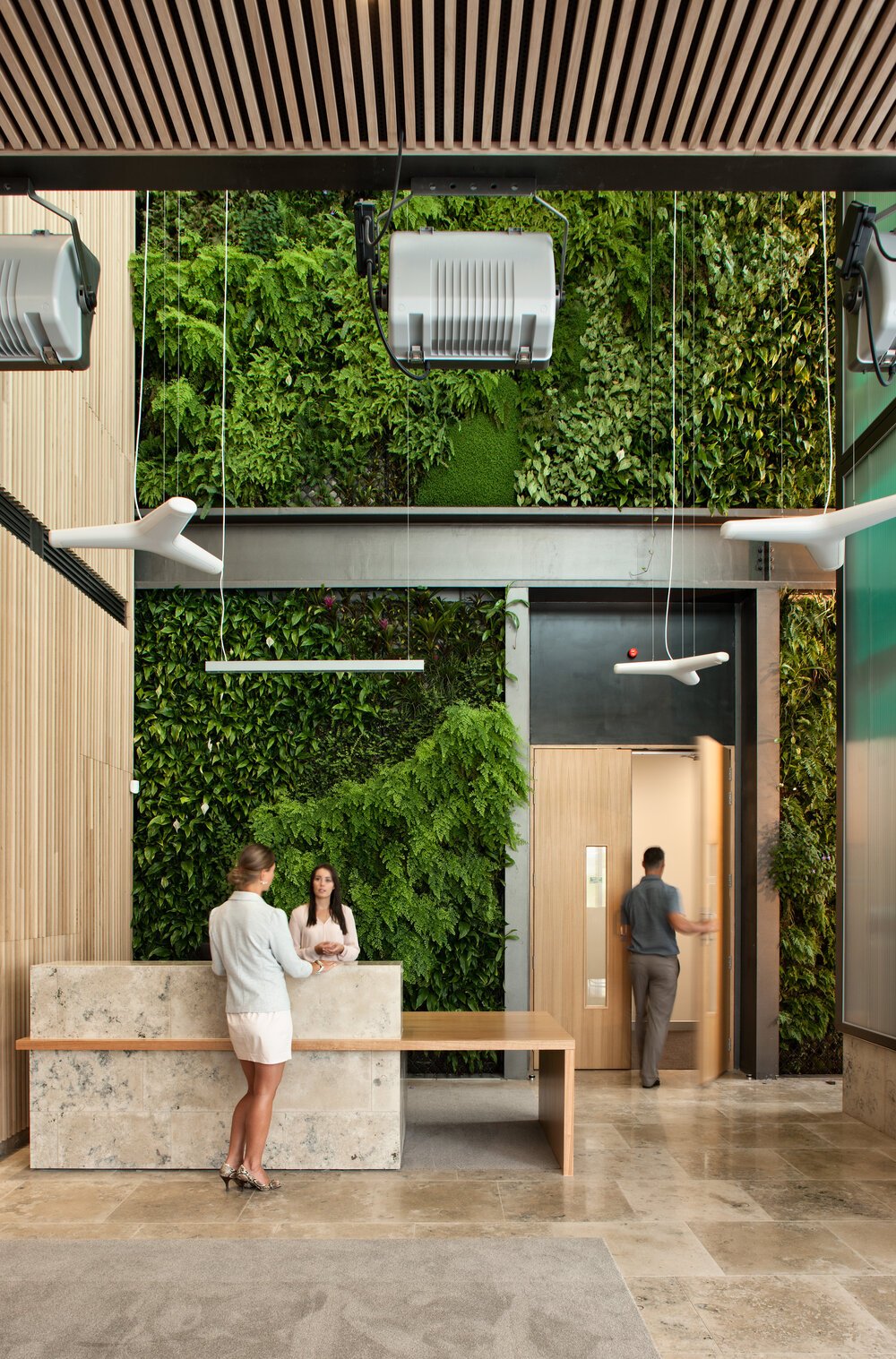Greening Our Approach to Healthcare Design
Kathleen Kilgour Centre in New Zealand showcasing biophilic healthcare architecture.
Table of Contents Show
How has the COVID-19 pandemic impacted healthcare facility design?
The COVID-19 pandemic has shone a light on certain design flaws in many healthcare facilities. Spikes in cases caused hospitals to scramble and quickly pivot operations in order to accommodate staff members, patient care, and visitors. One of the biggest challenges faced was creating dedicated COVID-19 units. Indoor air quality was an area under scrutiny as well. As a result, filtration systems and good air ventilation practices are now held to higher standards. As we settle into a post-pandemic world, how should we revise our approach to the design of healthcare facilities?
Green roof atop Zeckendorf Towers in NYC promoting sustainable building design.
How can green infrastructure improve healthcare environments?
The health sector could be an impressive employer of sustainable infrastructure, with the number of public hospitals, private healthcare facilities, and nursing homes in the tens of thousands. As it stands, the healthcare sector contributes almost 5 percent of the global carbon emissions. Green hospitals are not only good for the environment but also a well-researched contributor to patient and staff member recovery. By reducing energy use and water consumption, healthcare buildings could see significant drops in greenhouse gas emissions and cost savings - cost savings which could then be reinvested into enhanced patient care and recovery.
Given climate change’s damaging impacts on public health, the World Health Organization (WHO) identifies seven focus areas to consider when developing climate-friendly hospital infrastructure. And let us remind you that Urbanstrong’s Green Roof and Living Wall systems can satisfy all of these areas. These impact categories include:
Energy efficiency
– Reduce hospital energy consumption and costs through efficiency and conservation measures.
Green building design
– Build hospitals responsive to local climate conditions and optimized for reduced energy and resource demands.
Alternative energy generation
– Produce and consume clean, renewable energy onsite.
Transportation
– Use alternative fuels for hospital vehicle fleets; encourage walking and cycling to the facility; promote staff, patient, and community use of public transport; site health-care buildings to minimize staff and patient transportation.
Food
– Provide healthy, sustainably grown local food for staff and patients.
Waste
– Reduce, re-use, recycle, compost; divert waste from landfills.
Water
– Conserve water, and recycle water.
Interior living wall at Clinical Mind in Hoboken, NJ improving indoor air quality and ambiance
Why are living walls ideal for healthcare facilities?
Healthcare facilities are seeing improved patient outcomes after installing Living Walls. Largely due to their ability to offer patients and healthcare workers a myriad of mental and physical benefits for ultimately a better experience. Hospitals are high-stress environments for all; patients, visitors, and healthcare staff…. Living Walls and other forms of nature are proven to reduce stress levels by providing a peaceful and restorative setting; as well as provide enhanced feelings of well-being. Some studies have shown that a post-op patient with even a sightline view of nature can recover faster than a patient who does not have access to a natural view.
In 2011, Annerstedt and Wahrborg focused on nature-assisted therapy (NAT) methods. They reviewed dozens of healthcare studies that revealed measurable results experienced by both staff members and patients exposed to nature. When observing the studies, they found that the staff performed at optimal levels, increased employee satisfaction, and improved retention rates.
Lastly, air quality is another area in which Living Walls can improve otherwise stale indoor environments. Plants filter dust and other harmful particulate matter that can cultivate and aggravate respiratory issues for occupants.
Why choose Urbanstrong?
Our materials have been tried and tested in rigorous environments, such as healthcare, to cooperate with the most demanding sterile standards. Here at Urbanstrong, our Living Wall systems feature inorganic growing mediums, which, unlike organic mediums, do not break down nor allow for the growth of molds, algae, etc. Our thoughtful material selection allows for our systems to provide natural intervention for any healthcare design.
Urbanstrong offers varying Living Wall technologies, depending on the client’s goal and budget. If your project is considering a Living Wall, drop us a line!
About The Author
Lily Turner is a biophilic designer, project manager, and living wall design-build specialist with extensive experience across the United States. She brings a unique perspective on integrating social, environmental, and economic values into living architecture to create greener, more sustainable urban cities.
Lily collaborates closely with architects, designers, and contractors to deliver tailored living wall solutions that align with budget, design goals, and project scale. She is also the Chair of the Green Roofs for Healthy Cities’ Living Wall Committee and an active member of the Green Plants for Green Buildings Committee, advocating for innovative green infrastructure in the built environment.





